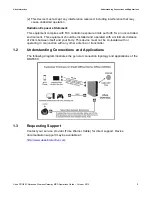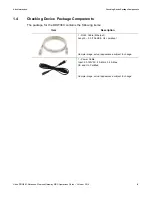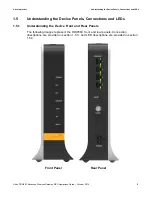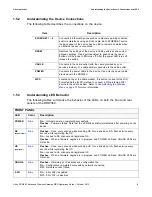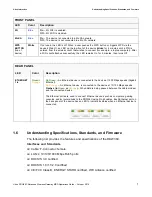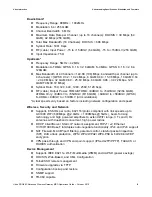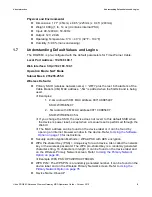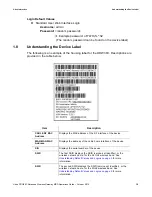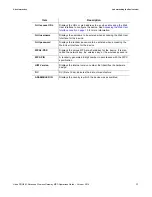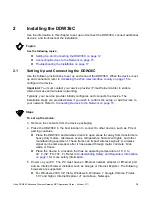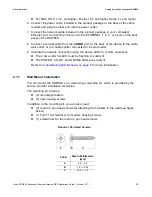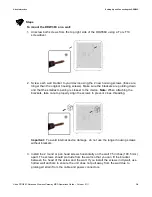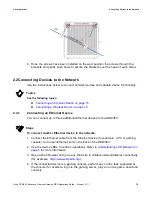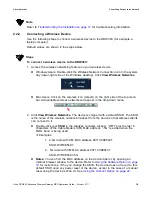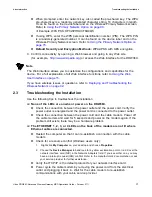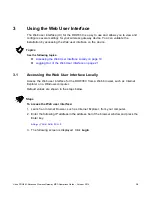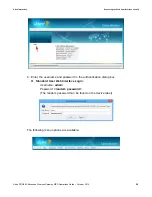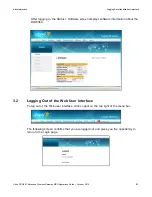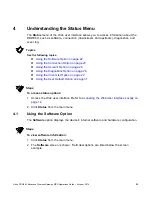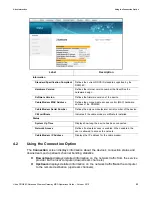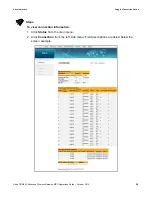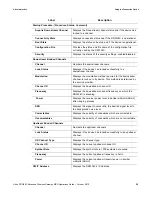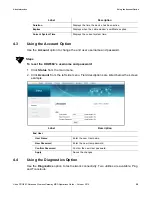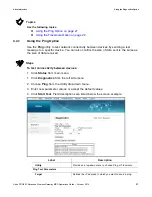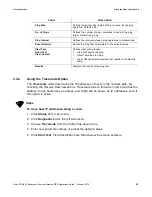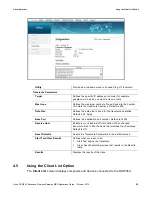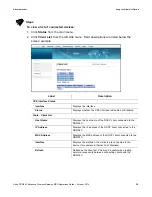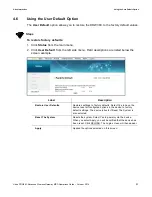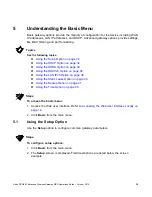
Ubee Interactive
Troubleshooting the Installation
Ubee DDW36C Advanced Wireless Gateway MSO Operations Guide • October 2111
17
When prompted, enter the network key, also called the pre-shared key. The WPA
pre-shared key is a randomly generated character string, 16 characters in length.
It can be found on the device label and on the Wireless Primary Network screen.
Refer to
Using the Primary Network Option on page 99
.
Example WPA PSK: HP3WZ7IHXCT6D9QS
If using WPS, enter the WPS personal identification number (PIN). The WPS PIN
is a randomly-generated number. It can be found on the device label and on the
Wireless Primary Network screen. Refer to
Using the Primary Network Option on
page 76
.
Default Security and Encryption Methods:
WPA2-PSK with AES encryption.
3. Confirm connectivity by opening a Web browser and going to any Web site
(for example,
http://www.wikipedia.org
) or access the Web interface for the DDW36C.
Note
The Web interface allows you to customize the configurations and capabilities for the
device. For a full explanation of all Web interface functions, refer to
Using the Web
User Interface on page 15
.
If you have wireless issues or questions, refer to
Deploying and Troubleshooting the
Wireless Network on page 92
.
2.3
Troubleshooting the Installation
Use the following tips to troubleshoot the installation.
None of the LEDs are on when I power on the DDW36C.
Check the connection between the power outlet and the power cord. Verify the
power outlet is energized and the power cord is connected to the power outlet.
Check the connection between the power cord and the cable modem. Power off
the cable modem and wait for 5 seconds and power on the modem again. If the
problem still exists, there may be a hardware problem.
The ETHERNET 1, 2, 3, or 4 LEDs on the back of the modem are not lit where
Ethernet cables are connected.
Restart the computer so that it can re-establish a connection with the cable
modem.
Check for a resource conflict (Windows users only):
1. Right-click
My Computer
on your desktop and choose
Properties
.
2. Choose the
Device Manager
tab and look for a yellow exclamation point or red
X
over the
network interface card (NIC) in the Network Adapters field. If you see either one, you may
have an interrupt request (IRQ) conflict. Refer to the manufacturer’s documentation or ask
your service provider for further assistance.
Verify that TCP/IP is the default protocol for your network interface card.
Power cycle the cable modem by removing the power cord from the electrical
outlet and plugging it back in. Wait for the cable modem to re-establish
communications with your cable service provider.

